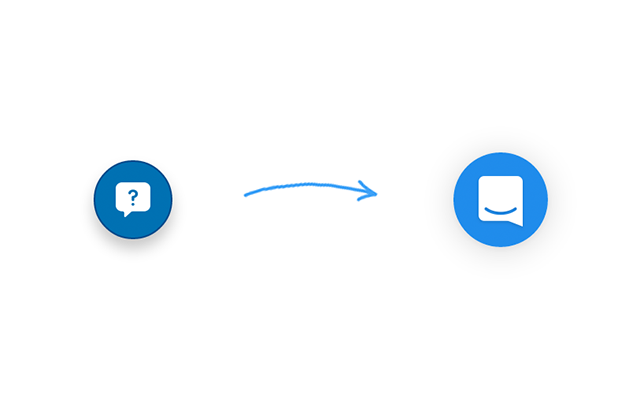Materialising Knowledge Transfer
Daniel: Manufacturers are the canaries in the coalmine of an enormous organizational challenge that will be coming to an industry near you very soon, if it has not already arrived. No, it is not China, 3D printers or trade policies. It is the talent pool, or lack thereof. While the “Boomer Brain Drain” is not a new idea, little is being done to stop the talent exodus that analysts predict will put organizations of all stripes and sizes at risk. Because of social and cultural factors; manufacturing is feeling this pain more acutely right now, but this trend is rapidly spreading across all sectors.
__M__ilda: I completely agree that the organisational knowledge is endangered since the "Boomer Brain Drain" is taking place right now! But more often I notice that the new generations and peers at work are trying to preserve and cherish the Baby Boomer experiences at any cost. This knowledge is a background and a part of the organisational identity. Because of this great reason the knowledge won't fade away as easily as most of us think.
D: Luckily, there are many solutions that organizations can implement to begin helping successfully plan, prepare and reduce the risk of the workforce shift currently taking place.
Communicate, Communicate, Communicate
D: Leaders need to communicate the reality of the succession planning needs to their staffs and boards. Model open and honest communication about the dire need to develop and transfer knowledge and skills to employees following them in the talent pipeline. Encourage your board and staff to ask questions and explore the reality and potential impacts of the brain drain on your organisation.
Assuming open communication is valued and being modeled in the organization, staff needs to communicate their employment plans with organizational leaders well in advance of making a move.
Many “organizational learning efforts” (the new jargon for succession planning) fail because it focuses solely on the explicit skills needed to perform the job, yet the implicit aspects of the job is often what makes someone an expert. The tacit knowledge held by employees is typically the most important ingredient in their expertise. This is the knowledge that is most difficult to transfer to another person because experience provides what general directions cannot. It is the difference between learning Spanish from a book and learning it by living in Mexico. The nuances of the practical application of knowledge can be expressed, and they are nearly impossible to learn in the absence of experience, or an experienced guide.
More experienced staff must begin understanding and documenting the tacit aspects of their expertise and day-to-day work. Once this knowledge is documented and understood it becomes easier to teach it to an emerging leader.
M: Yet again, well said about the leaders and them communicating the reality and the plans to the boards and staff. Though it can become a drawback since it might cause a very top-down approach in the organisation. The staff will need to communicate their plans and report it to the leader it becomes very hierarchical "knowledge" exchange. Rather than looking at the knowledge transfer through a pyramid prism we should look, and transform it into a vital and lively circle of knowledge and experience sharing, where not only the staff is learning, but the team leader is expanding his knowledge field as well. It is important that during the sharing circle everyone would be treated with an equal respect since all peers are experts of their branch.
Figure Out “Who Knows What” and “Who Needs to Knows What”
D: Now is the time for organizations to look at their employee knowledge base and ask themselves two critical questions: Who here knows what? And, who is at risk of leaving?
With these questions answered, you can begin to solve the third part of the equation: Who here needs to know what? This organizational knowledge/skill mapping makes it possible to craft a plan that will make succession planning successful. By identifying the skills contained by your employees and the employees who are leaving, you can begin to identify where the skills and knowledge at risk of leaving your organization can be transferred.
This is the core of addressing a successful succession plan and stopping the brain drain. -The earlier the above questions are answered, the better chance you have of filling the talent and knowledge gaps within your organization. And, this is where the intergenerational workforce comes into play. Most often, the organizational elders are the ones retiring. These employers have invested much time, energy and money developing their senior staff, and when they retire they will take with them deep company, institutional and industry knowledge. By taking a proactive step of mapping your organization's skills you are taking the first step towards creating a path of developing your junior employees. The potential that intergenerational workplaces have is enormous. If the skills and knowledge of each subsequent generational cohort is passed down to each ensuing generation, each generation will make exponential progress.
M: Knowledge mapping is a great idea, though the risk of a person leaving shouldn't bother anyone since the knowledge and expertise should, and is being shared at all time. Of course, it's a matter of organisational behaviour and identity. But most of the knowledge and rules are already there, embedded into our every day water cooler or coffee talks, the only issue with it is that no one writes the thoughts down and makes it into something material - a guy you go to when you want to learn or don't know something. Let's admit it is easier to continuously share the knowledge and plant it somewhere rather than fill the gaps afterwards.
Develop a Strategic & Measurable Plan
D: Once an organization’s skills and knowledge are mapped, it is time to develop a plan to move those skills and knowledge from Worker A to Worker B. There are a handful of very successful processes of transferring explicit and tacit organizational knowledge. My favorite is the Steve Trautman 3-Step Plan. Dorothy Leonard is another expert in this field.
Whatever process you decide to take, make sure it is measurable and that you are tracking it constantly. Define metrics to measure bench strength, skill aptitude and risk. Today’s workplace is ever changing and managing people and knowledge is a moving target.
M: Another useful tactics could be the creation of the "success team". Gather people with the different fields of expertise! Make them excited about sharing the knowledge in the organisation. With this tactics a leader will show how easy it is to contain the knowledge and start changing the organisational behaviour from the basics. In this way preventing the gap filling, and creating a knowledge sharing circle. Success measuring is all up to you. Just define everything clearly before picking the participants of the "success team".
Implement, Assess and Revise
D: The final step is to rinse, review and repeat. Time is ticking, so the perfect plan is not worth waiting around for. Do not let ‘perfect’ be the enemy of ‘good’. Take the resources you have and get moving! The importance of having metrics is to gauge the success of your implementation. Not to gauge your success, but as a way to see what is working and learn what is not working.
Regardless of the process you took to transfer the skills and knowledge contained by your retirees, chances are it did not go as planned. Assess your plan, question your metrics, learn from the experience of your employees, revise the plan and keep going! Succession planning, or knowledge transfer, cannot be a once a decade intervention. If you are seeking a continuity of services, products and talent, it needs to be embedded in your organization’s culture.
Peter Drucker said, “Today knowledge has power. It controls access to opportunity and advancement.” The “brain drain” threatens organization’s continuity of operations, services, products, and the needed innovations that we have come to expect from our organizations. Isn’t it time for your organization to turn the coming “Brain Drain” crisis into a springboard for future success?
M: I want to thank Daniel for his thoughts, since the "Brain Drain" is a great threat to every organisation. Though the ones' who have chatty employees and peers should probably feel less endangered, since the knowledge sharing is happening verbally during the coffee breaks. The only thing that needs to be done is materialisation of the though exchange.




